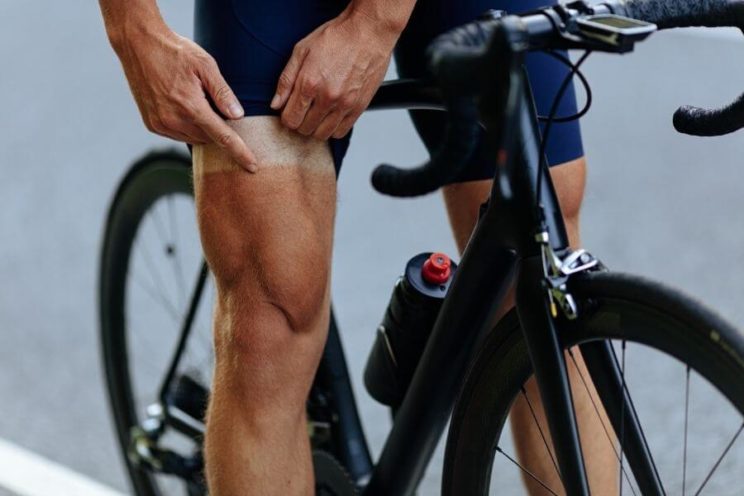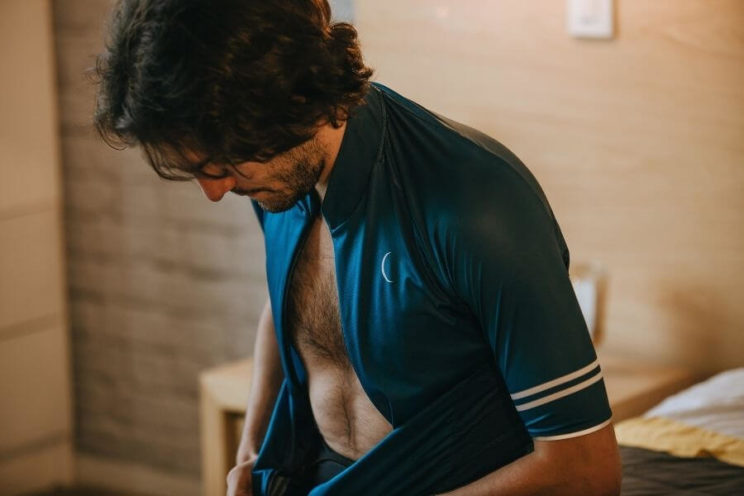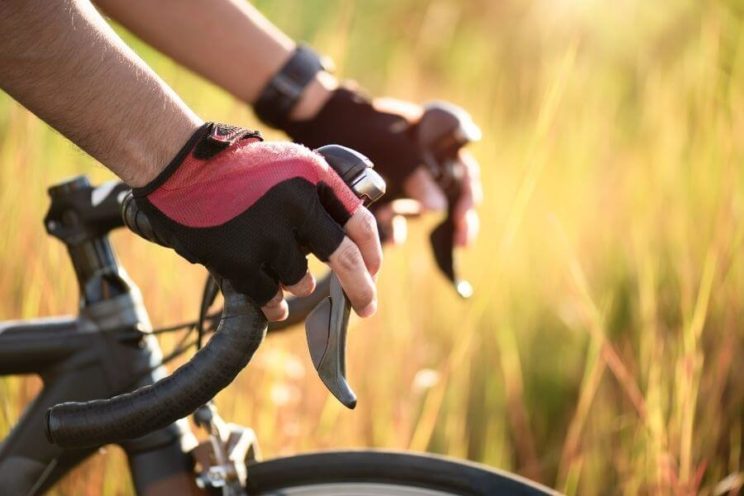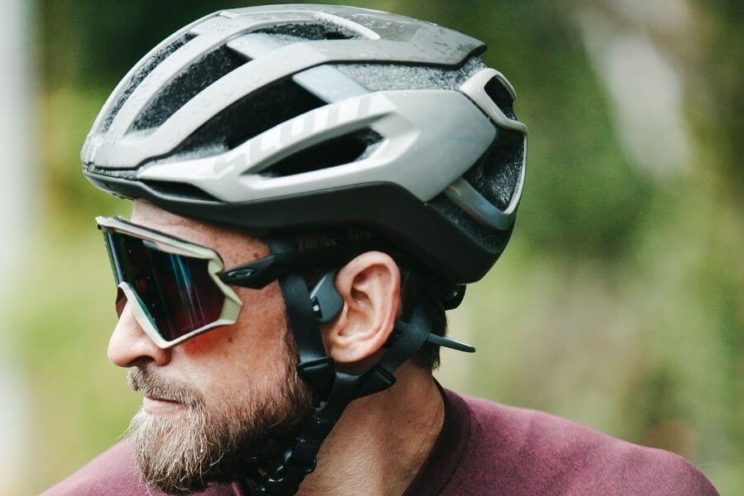Cycling clothes and equipment They have made a huge leap, both in design and in the use of textile high technology fabrics. Large manufacturers offer jerseys, culottes, gloves and other accessories with materials adapted to any station. In this case, to summer.
Extreme heat is one of the great enemies of the cyclist. It affects the
Hydration and self -regulation of body temperature, which can accelerate wear and reduce performance.
The clothes you wear on the bike will be decisive in this self -regulation function. You must have adequate construction, design and tissues to mitigate the effects of heat.
Perspiration, lightness and protection They are the three basic characteristics that cycling clothes must have for summer. Let's see what garments and tissues can help you get the balance between all.
[IRP Posts = "8034" Name = "Cycling is fashionable: pedaling trends with style"]
Shoes and socks
We start with the feet, which after all are the points of contact with the bike that suffer greater pressure.
Sneakers
Choose low heel height and microperforated tissues in the tongue and instep (generally synthetic skin), the feet parts most prone to sweat.
In high -end shoes, there are more and more models with Dynema fabric, with very fine and resistant threads.
It is also very important to have ergonomic and breathable sole, and microperphorations in the metatarsal area. It is the support point on the pedal and where more strength is exercised to move it. Therefore, pressure and rubbing is greater and requires adequate ventilation.
Socks
The socks are accessories of great importance to choose your summer equipment. The feet tend to sweat with heat, and more when pedaling. That is why the socks you use in your daily life are not valid.
If you are renewing costumes for summer, socks should be a priority in your budget, next to the jersey and culotte. The tissue must be fine, with areas of synthetic fiber grid and the body in Lycra. In addition, they should have silicone ends to facilitate ankle adjustment or tibial zone.
As for the cane: if your priority is perspiration and freshness, it flees from the 12 cm or more socks. A height of 5 or 6 cm will be ideal for optimal perspiration. For about 15 euros you can find high quality pairs of specialized brands:
Turn,
Assos,
Sportful,
RH+, etc.
Culotte
Most current culottes are manufactured with synthetic fibers, usually a mixture of polyester, polyamide and lycra (elastane). When you compare different models, look at your composition and choose those that have more polyamide and less polyester. It is a very important aspect that many cyclists overlook.
The recommended temperature range of all summer cyclist clothing must be between 20 and 40ºC.
They are similar fabrics in properties, but polyamide has better perspiration capacity. Dry sweat quickly and offers a great commitment between lightness and sun protection.
Likewise, Badana has to have an antibacterial treatment and good capacity to filter sweat. As for the straps, if they are from mesh (Mesh polyester) they will weigh less and perspire much better.

Maillot
The jersey is the key garment of your summer equipment. It must act as a second skin, prioritizing perspiration above any other factor. What fabrics can improve their properties? Here are some of them:
Polyester.
It is the star fabric with which most jerseys are made. It forms 80% of the composition of the garment. It is a base fabric with a great relationship between breathability and protection against the entrance of the sun's rays. In addition, the sweat filters and evacuates very well.
Mesh
Mesh is also a polyester fiber, but much thinner and tissue in mesh. In summer technical mailots it is an indispensable fabric to lighten and
open The jersey in the areas where you sweat: armpits and upper and central part of the back. A good summer jerse must have mesh insertions.
Lycra.
The Lycra or Elasthano forms the superficial or most exposed part of the jersey, providing elasticity and adaptation to the cyclist's body. A percentage between 10 and 15% of the entire jersey is adequate to feel comfort and freedom of movement.
The ideal weight of a summer meillot ranges between 110 and 130 g, although some exclusive models do not reach 100 g.
We cannot forget the auctions or silicone bands at the waist and the mangot sleeves. On the latter, the laser cut in the highest quality garments eliminate seams and get better to the arm.

Finally, pay attention to more advanced tissues with refrigerant properties, such as the Polartec Delta of the Rh+Mailots, or the graphene thread used by Alé, which combines lightness, flexibility and dispersion of heat.
What sleeve length is the ideal for you?
Summer mailts with long sleeves, until almost the height of the elbow, have become fashionable; Especially, in high ranges for the competition. They have a very tight pattern made of laser that provides protection and some aerodynamic gain.
It is a trend that you can add if you seriously train and you want to have an Aero cutting jersey. But, beyond this context, counting a larger or less manga length will depend on your style or the degree of protection that you look for, in front of the sun or in front of the contact of external elements (branches or leaves in the case of the MTB).
Jacket / showers
Although summer is a time to forget the long sleeve and coat clothes, it is recommended that you always have a light sleeve jacket, a vest or a raincoat. They are useful garments in case of sudden changes of time, storm forecast, etc.
Also keep in mind that in many places, even in summer, in the early morning you can be cold. To do this, many brands offer entertainment jackets also valid for summer, for temperature ranges between 10 and 20ºC. In these garments, fabrics such as polyester or mesh are replaced by more thermal and heavy other wool or cotton wool.
Gloves
Unless you practice MTB, the summer glove must always be a short finger. In addition, in the back of the hand it is convenient for the tissue to be mesh, or lycra, with microperphorations in the palm. You must also pay attention to seams, which must be small and smooth.
At this point, if you are going to buy them from a physical store, try them carefully. If possible, grab with them the fist of a handlebar or, failing that, a bar or similar, to check that seams do not rub or bother.

Accessories: helmet and glasses
The helmet and glasses are two essential accessories.
The helmet is mandatory, at any season of the year. If you can have a hull specifically designed for the summer, great. Lightness (below 300 g) and air flow through ventilation channels are fundamental issues to which you must attend. Without forgetting the solidity of its structure.
In this sense, and if your claims are not to train hard or roll very fast, it flees from aerodynamic helmets, more closed and with fewer openings. Opt for one between 18 and 21
holes distributed throughout the surface of the helmet.
Head sweating will depend on these ventilation openings and the type of inner padding.

Also look at elements such as the fabric or thickness of the straps, which can generate enough heat and sweat if they are not breathable, and in the interior pads. Opt for those with microperphorations on their surface and antibacterial treatment.
As for the sunglasses, models with photocromatic lenses lose prominence in summer in favor of polarized, more effective models in the face of excessive brightness or the glow of sun's rays. Do not forget either to verify the ultraviolet protection approval, which must be the UV400, as well as the type of lens filter, as indicated in this lentiamo table. Summer sunglasses must have at least filter 2; Ideally, 3.

 Finally, pay attention to more advanced tissues with refrigerant properties, such as the Polartec Delta of the Rh+Mailots, or the graphene thread used by Alé, which combines lightness, flexibility and dispersion of heat.
What sleeve length is the ideal for you?
Summer mailts with long sleeves, until almost the height of the elbow, have become fashionable; Especially, in high ranges for the competition. They have a very tight pattern made of laser that provides protection and some aerodynamic gain.
It is a trend that you can add if you seriously train and you want to have an Aero cutting jersey. But, beyond this context, counting a larger or less manga length will depend on your style or the degree of protection that you look for, in front of the sun or in front of the contact of external elements (branches or leaves in the case of the MTB).
Finally, pay attention to more advanced tissues with refrigerant properties, such as the Polartec Delta of the Rh+Mailots, or the graphene thread used by Alé, which combines lightness, flexibility and dispersion of heat.
What sleeve length is the ideal for you?
Summer mailts with long sleeves, until almost the height of the elbow, have become fashionable; Especially, in high ranges for the competition. They have a very tight pattern made of laser that provides protection and some aerodynamic gain.
It is a trend that you can add if you seriously train and you want to have an Aero cutting jersey. But, beyond this context, counting a larger or less manga length will depend on your style or the degree of protection that you look for, in front of the sun or in front of the contact of external elements (branches or leaves in the case of the MTB).

 Also look at elements such as the fabric or thickness of the straps, which can generate enough heat and sweat if they are not breathable, and in the interior pads. Opt for those with microperphorations on their surface and antibacterial treatment.
As for the sunglasses, models with photocromatic lenses lose prominence in summer in favor of polarized, more effective models in the face of excessive brightness or the glow of sun's rays. Do not forget either to verify the ultraviolet protection approval, which must be the UV400, as well as the type of lens filter, as indicated in this lentiamo table. Summer sunglasses must have at least filter 2; Ideally, 3.
Also look at elements such as the fabric or thickness of the straps, which can generate enough heat and sweat if they are not breathable, and in the interior pads. Opt for those with microperphorations on their surface and antibacterial treatment.
As for the sunglasses, models with photocromatic lenses lose prominence in summer in favor of polarized, more effective models in the face of excessive brightness or the glow of sun's rays. Do not forget either to verify the ultraviolet protection approval, which must be the UV400, as well as the type of lens filter, as indicated in this lentiamo table. Summer sunglasses must have at least filter 2; Ideally, 3.












